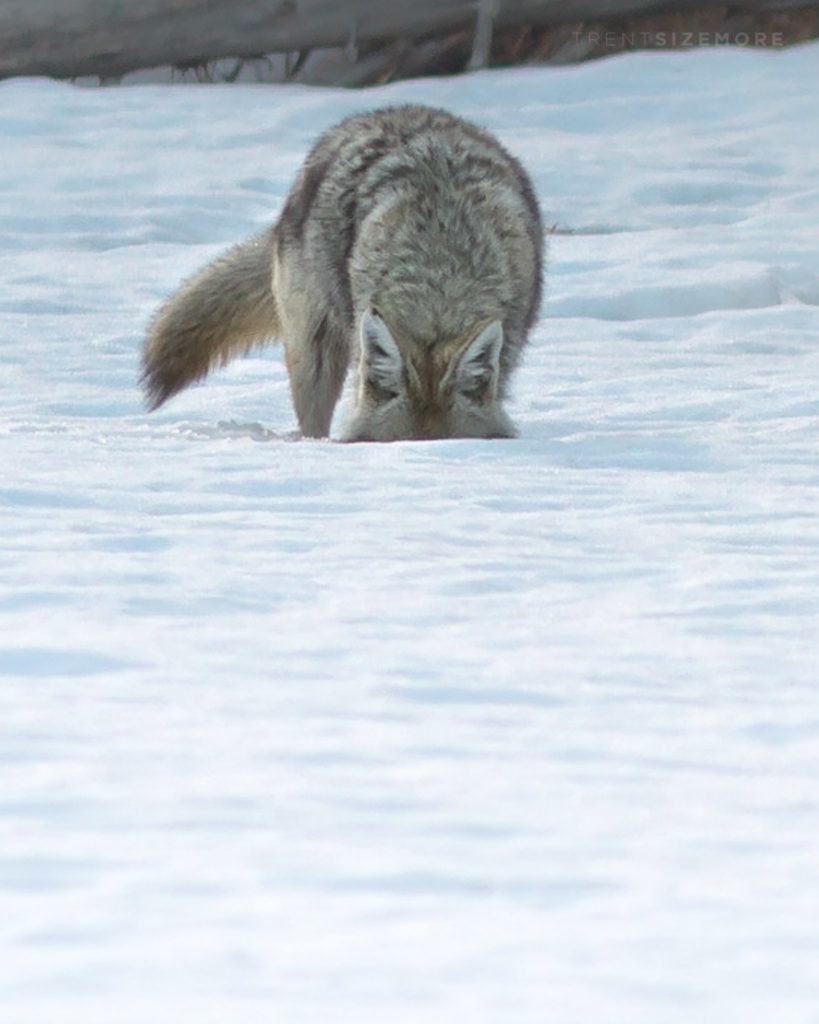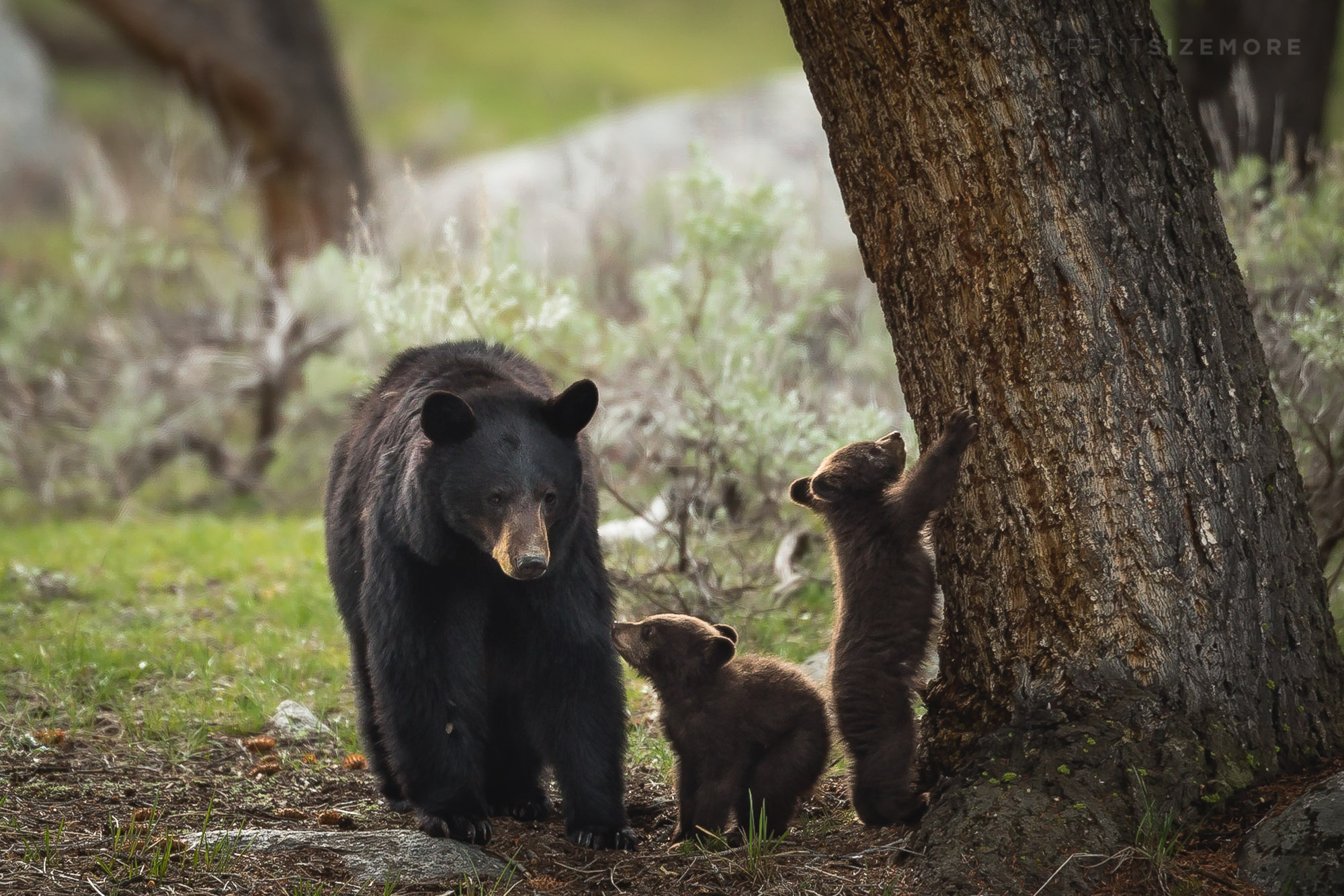Whether you’re planning a spring photography trip to Yellowstone on your own or with one of my workshops, there’s a good bit of preparation to do beforehand. This post covers a lot of what you need to have and know for the best possible experience. I would highly recommend reading your camera’s manual and being familiar with all the buttons and settings available.
WEATHER & CLOTHING
The first interior roads begin to open in late April (Gardiner to Cooke City is open year round). April and May are not too late for a decent snowstorm to come through Yellowstone, so you should be prepared for less than ideal spring weather. Average temperatures from April to May range between 25 to 60F (it could be much colder), with 1-6″ of snow each month.

Coyote hunting in April snow
If you plan on walking, especially off the road, you will want to have waterproof boots. There will still be several feet of snowpack left in many place in April and May. You will also want both an insulating jacket and waterproof jacket.
A few other suggested items for cold weather:
- Gloves
- Hat
- Warm wool socks
- Hand warmers
CAMERA GEAR & PROTECTION
Many people ask if they should bring this lens or that lens, and I usually respond that they should bring anything they have as room allows. The exception would be overlapping focal lengths. If you have a 100-400mm lens, also bringing a 70-300mm wouldn’t make much sense.
Ideally, you’ll want to have at least a wide angle lens for landscape (17-40mm or similar), a medium telephoto (70-200mm) for general purposes, and a supertelephoto for wildlife (100-400mm, 150-600mm, or 400mm+ prime). I rarely use a tripod myself, but if long exposure landscapes are your specialty or you have difficulty handholding a telephoto lens, you may still want one.
Since rain and snow is possible, you’ll want to invest in a decent rain cover that protects your camera and lens. Most cameras and high quality lenses are at least somewhat water resistant, but adding a completely waterproof cover is well worth the cost.
SPRING WILDLIFE
While spring offers the chance to see all of Yellowstone’s wildlife, bears are the highlight of this season. Most bears start coming out of hibernation in March and April, while mothers with cubs sometimes emerge as late as May. If there is a large traffic jam with a crowd of people, there’s a good chance it’s a bear sighting. There will usually be a ranger on the scene directing people how far away to stand, but not always. Make sure you remain at least 100 yards away if you aren’t inside your vehicle, and do not stop in the road.
I would not recommend hiking into the backcountry for the sole purpose of photographing bears. The backcountry bears are less accustomed to seeing people, and will possible act more aggressive in an encounter. The safest way to view bears in Yellowstone is with a group of well-behaved people.
The second highlight of spring is the baby animals coming out, starting with bison calves in late April and early May. Elk and pronghorn calves arrive later. Coyote, fox, and wolf pups will be out in spring, but much less likely to encounter than the bigger mammals.

[text-blocks id=”4129″]


Very helpful!! Thank you! The gear has been one of my hesitations.
My family and I will be in Yellowstone on the 25 of May for a few days. I have very much enjoyed your articles and blog. If money allows I would love to come back next year and attend a class with you.
lodging included or ??
Lodging is not included, but I’ll be glad to offer recommendations.